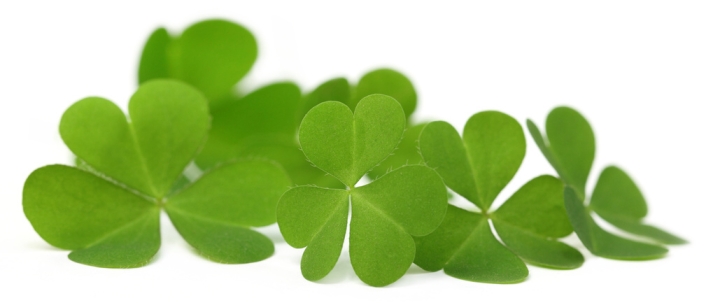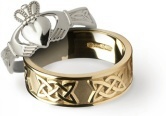Blog Categories
Blog CategoriesCeltic Ireland - The Story of the Irish Shamrock
Saint Patrick the Shepherd
“Saint Patrick as a young man
Was captured and carried away.
He became a slave in Ireland,
Where he's loved until this day.
Patrick tended his sheep flock,
Where he heard the voice of God,
And he became a shepherd,
To those born on Irish sod.
He used the Irish shamrock
To teach the trinity.
He showed the Celtic Church
The path to Eternity.
So wear your green with honor
And remember this great man -
A saint who learned as a captive
To seek God and follow his plan”
 |
Ireland is famous for the story of the shamrock and just like the lines above, there are many verses dedicated to the shamrock in Ireland and it’s association with Saint Patrick. But how and why did the shamrock become the emblem of Ireland?
The word shamrock comes from the Irish ‘seamair og’ or young clover. References to this appear in very early Irish literature and there was an early story that Saint Brigid decided to stay in County Kildare when she spotted a beautiful field covered in the blossom of clover (scoth-shemrach).
Shamrock then gets mentioned in the English language back in 1571 in the work of the English Elizabethan scholar Edmund Campion. He states that the Irish ate shamrock, but this was later thought to be a misunderstanding due to its similarity to the Irish word seamsog (wood sorrel).
Shamrock was then said to have been used by Saint Patrick to demonstrate the holy Christian doctrine of the Trinity (Father, Son and Holy Spirit) when Ireland was becoming Christian in the 5th century.
When Saint Patrick became the patron saint of Ireland, shamrock then began to be used as a symbol of the country. The shamrock even receives legal protection by the Government, as under the Trade Marks Act of 1996, the use of the shamrock is restricted only to goods or services that are proven to be of Irish origin and applications to use it have to be made to the relevant Government department.
Visitors to Ireland will be most familiar with the shamrock as it is the emblem for Aer Lingus, Ireland’s national airline and is also the logo of the Irish Tourist Board, Failte Ireland.
Saint Patrick’s Day in Ireland is when the shamrock is most celebrated. On 17th March every year, shamrock is distributed and worn on lapels as a badge and the celebrations include ‘drowning the shamrock’.
As tradition had it, it was said that the true Irish shamrock could only be grown on Irish soil or in Ireland. In fact the opposite is true – the three-leaf clover is grown all over the world from North America to South Africa – but is called by other names in those locations.
Shamrock is usually considered to refer to the species Trifolium dubium (lesser clover or seamair bhui) or Trifolium repens (white clover or seamair bhan). However, other three-leaved plants, such as Mediacago lupulina, Oxalis acetosella or Trifolium pratense are also sometimes called shamrocks or clovers, so the shamrock is a pretty ubiquitous plant!
As Charles Nelson, well known Irish botanist has said: “Shamrock exists only on Saint Patrick’s Day in reality. Every other day of the year it is known simply as young clover!”
It has become a tradition for the Taoiseach of Ireland to travel to the White House to meet the American President every Saint Patrick’s Day and present them with a bowl of Irish shamrock in a special Waterford Crystal bowl. This association between Ireland and the shamrock and the annual outing on the world stage means that Ireland’s favorite little green plant is truly here to stay!
